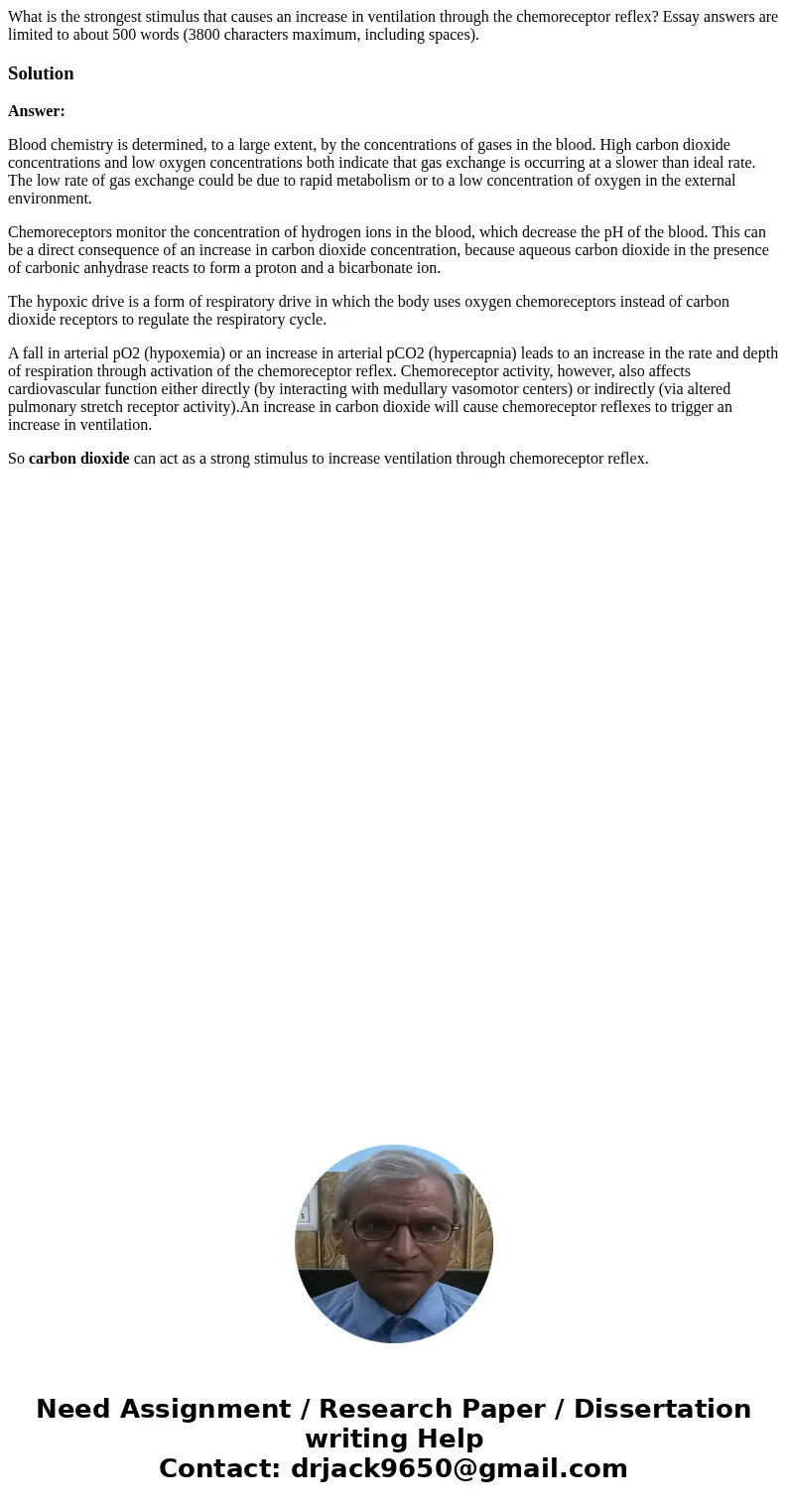What is the strongest stimulus that causes an increase in ve
Solution
Answer:
Blood chemistry is determined, to a large extent, by the concentrations of gases in the blood. High carbon dioxide concentrations and low oxygen concentrations both indicate that gas exchange is occurring at a slower than ideal rate. The low rate of gas exchange could be due to rapid metabolism or to a low concentration of oxygen in the external environment.
Chemoreceptors monitor the concentration of hydrogen ions in the blood, which decrease the pH of the blood. This can be a direct consequence of an increase in carbon dioxide concentration, because aqueous carbon dioxide in the presence of carbonic anhydrase reacts to form a proton and a bicarbonate ion.
The hypoxic drive is a form of respiratory drive in which the body uses oxygen chemoreceptors instead of carbon dioxide receptors to regulate the respiratory cycle.
A fall in arterial pO2 (hypoxemia) or an increase in arterial pCO2 (hypercapnia) leads to an increase in the rate and depth of respiration through activation of the chemoreceptor reflex. Chemoreceptor activity, however, also affects cardiovascular function either directly (by interacting with medullary vasomotor centers) or indirectly (via altered pulmonary stretch receptor activity).An increase in carbon dioxide will cause chemoreceptor reflexes to trigger an increase in ventilation.
So carbon dioxide can act as a strong stimulus to increase ventilation through chemoreceptor reflex.

 Homework Sourse
Homework Sourse